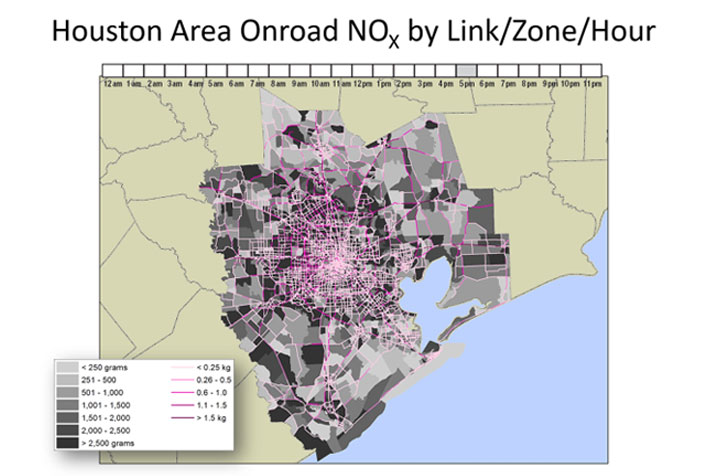Development of an Innovative Tool to Help Regional Air Quality Districts Model On-Road Emissions

Project Brief
The Challenge
A city’s air quality managers must ensure that their transportation plans will help the city meet federal air quality standards that protect human health and the environment. Estimating the emissions from an urban area’s transportation network of roadways, truck stops, and parking areas is no simple task: the transportation models, as well as the inventory of vehicles, emission controls, fuels, and operating characteristics, are varied and complex.
ERG's Solution
In response to this challenge, ERG developed a computer model to calculate on-road emissions at a high spatial resolution and allow a streamlined approach between producing detailed inventories for regional air quality modeling and producing aggregate numbers for transportation conformity analysis.
This computer model, named the Spatial Emissions Estimator model, calculates emissions from vehicles using EPA’s vehicle emissions model MOVES and Houston’s travel demand model used for long-range transportation planning. ERG applied the SEE model in the Houston-Galveston-Brazoria area to calculate emissions at the link level within eight counties and also improve spatial resolution for emissions from vehicles parked away from roads. SEE also makes it possible to include emissions from the Port of Houston and other heavy-duty truck emission “hot spots” in Houston’s regional air quality planning.
To make SEE user-friendly, ERG developed a Python-based graphical user interface with a supporting Perl and MySQL backend, which prepares MOVES input databases and checks the data quality of the inputs; imports the hourly link data from Houston’s travel demand model; runs MOVES to generate emission rate lookup tables; and computes the inventory.
Following the initial success of this project, Houston has been using the SEE model to demonstrate transportation conformity since 2014. ERG has updated and improved SEE over the years, including adding new output reports, reducing the runtime required, and ensuring compatibility with new versions of MOVES released by EPA.
Client
Houston-Galveston Area Council